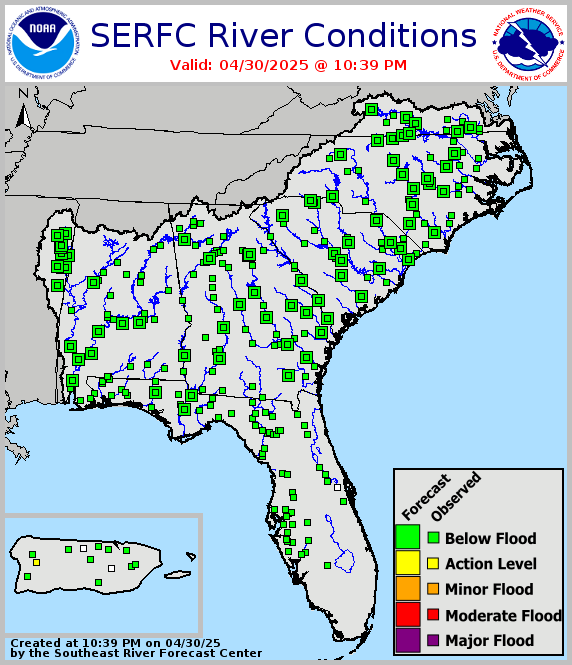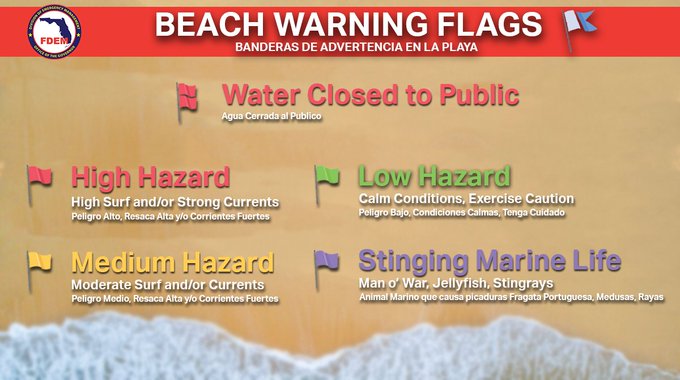Current Weather Outlook
Statewide weather outlook from Florida Division of Emergency Management Meteorology
Wednesday, December 31, 2025
...Cold Start this Morning Throughout North and Central Florida With Near and Sub-Freezing Wind Chills...Very Dry and Cold Air Embedded Within the State...Elevated Wildfire Conditions Statewide; Localized Dangerous Conditions Possible...Bitter Cold Temperatures Overnight Throughout North and Central Florida - Sub-Freezing Temperatures...Freeze Warnings Across Suwannee Valley and North-Central Florida...Wind Chills In the 20s and 30s for North and Central Florida and 30s to Lower 40s Across South Florida Tonight - Cold Weather Advisories...Moderate Risk for Rip Currents Statewide With Localized High Risk...
Updated at 10:07 AM EST
Today's Threats:
|
No Threat |
Low Threat |
Medium Threat |
High Threat |
|
Lightning |
Tornado |
Damaging Wind/Hail |
Wildfire |
Fog (Overnight) |
Freeze (Overnight) |
Wind Chill (Overnight) |
Rip Currents |
|
Locally Statewide |
North & Central FL Interior South FL |
North & Central Florida Interior South FL
|
Gulf and Palm Beach Counties Statewide |
![]()
Weather Summary for the Next 24 Hours:
Wind chills were in the 20s and 30s across much of the state this morning, and Cold Weather Advisories are in effect nearly statewide until 9:00AM-10:00 AM EST. Another mostly sunny and dry can be expected throughout the state as high pressure dominates over the state (near 0% chance of rain). With very dry infiltrating the state, relative humidity values will fall below critical thresholds this afternoon statewide this afternoon (25-30%). The Storm Prediction Center (SPC) is outlooking an Elevated Risk (level 1 of 3) for Wildfire Danger from the I-75 corridor and throughout the Peninsula given the critical relative humidity values and lingering breezy winds over ongoing and worsening drought conditions. Chilly and dry conditions can be expected throughout the overnight hours throughout the state. Cold air will hold steady in the state overnight, especially with the clear skies and we could see Frost Advisories extend throughout much of the state for frost development by early Thursday morning.

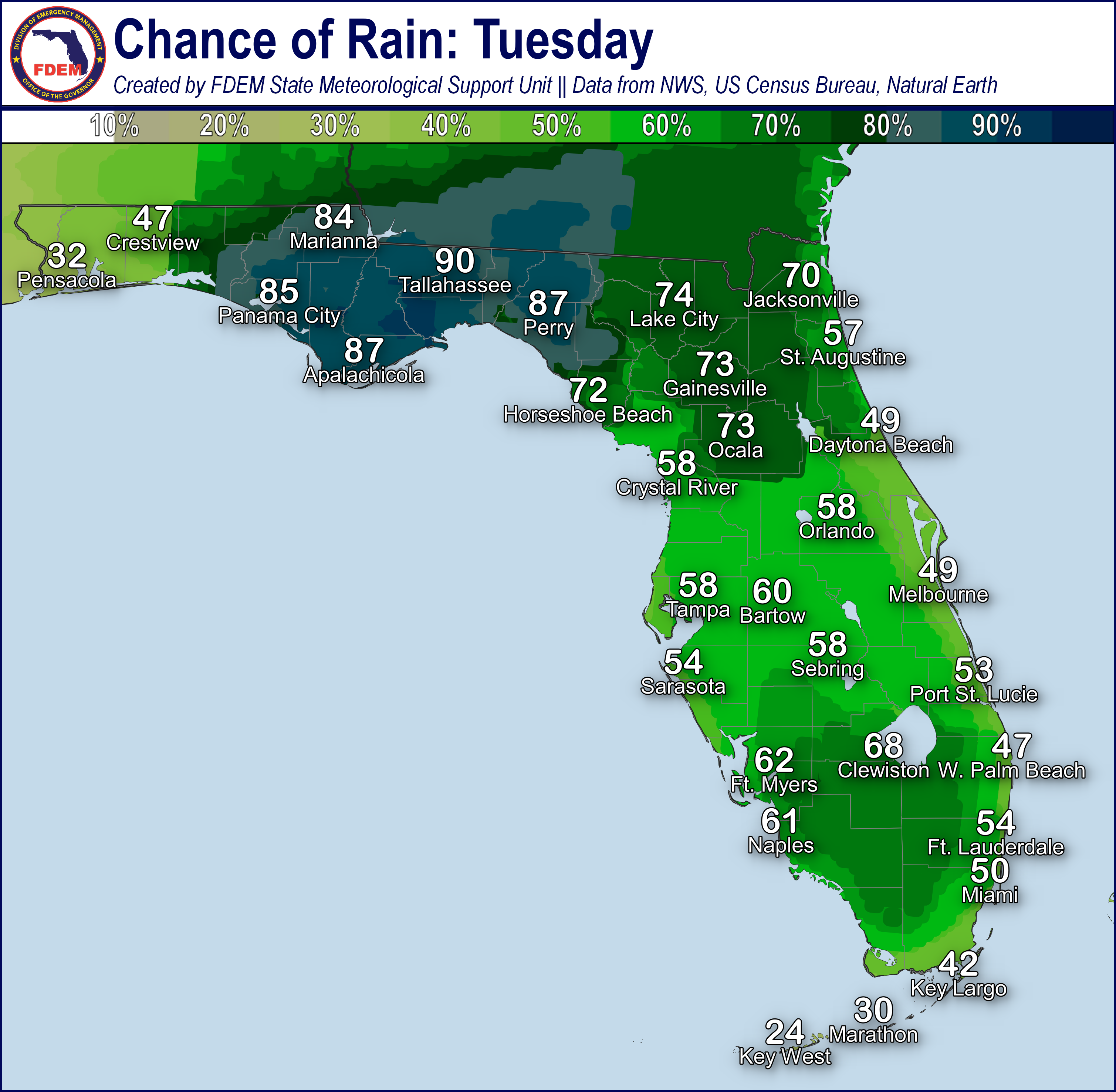
High temperatures will be in the middle 50s across North Florida, upper 50s and lower 60s across Central Florida and the middle 60s across South Florida this afternoon. Low temperatures will fall into the lower to middle 30s throughout the Suwannee Valley and North Florida, and Freeze Warnings have been issued for the Suwannee Valley and interior Northeast Florida through 9:00 AM EST Thursday morning. Low temperatures throughout Central and South Florida will reach the middle to upper 30s throughout interior regions and 40s to near 50s along the coasts. Feels-like temperatures will fall into the upper 20s to lower 30s throughout North Florida and lower to middle 30s throughout interior Central and South Florida. Cold Weather Advisories may be needed again overnight and early Thursday morning, especially for interior areas of the Peninsula.
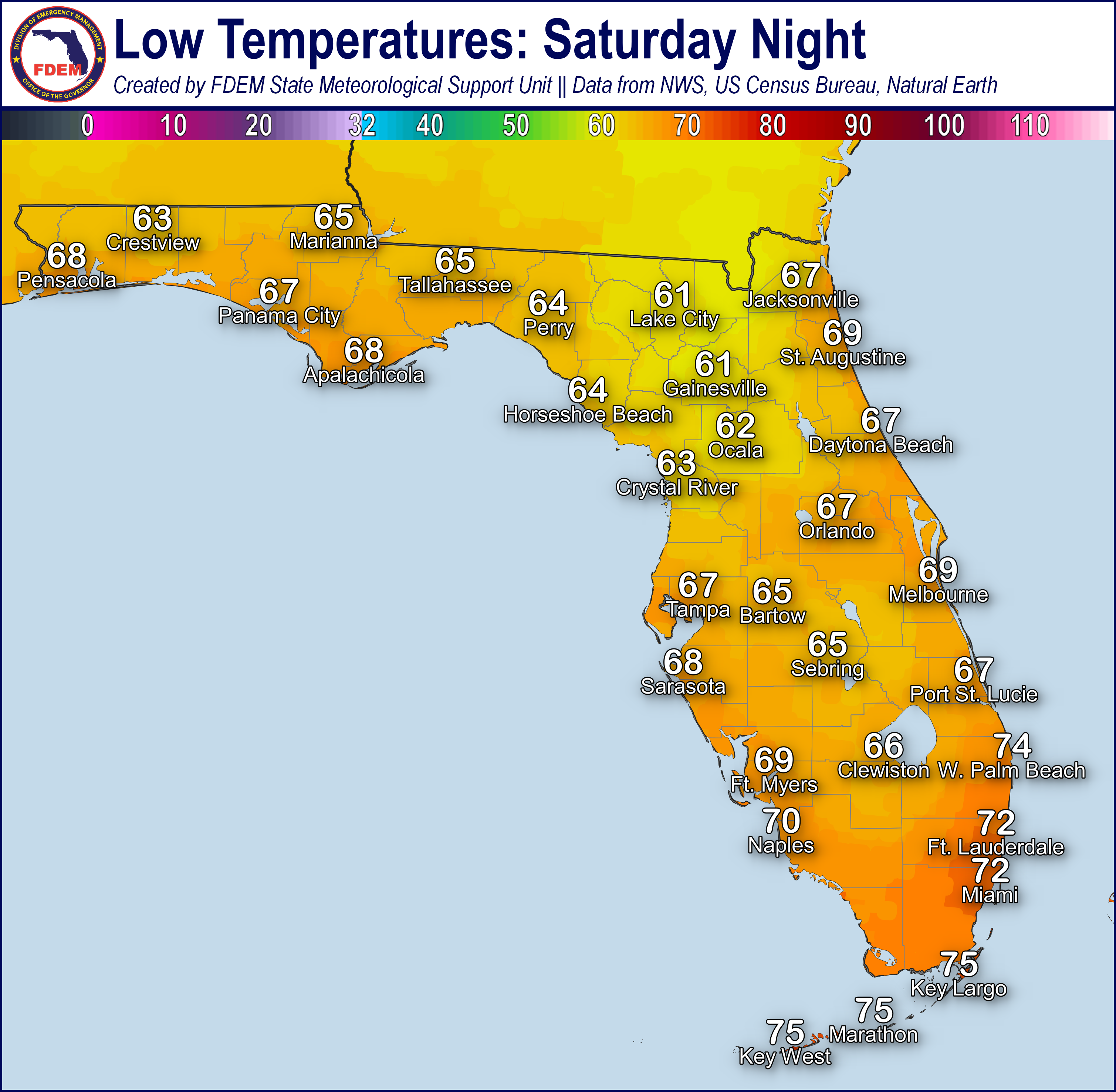
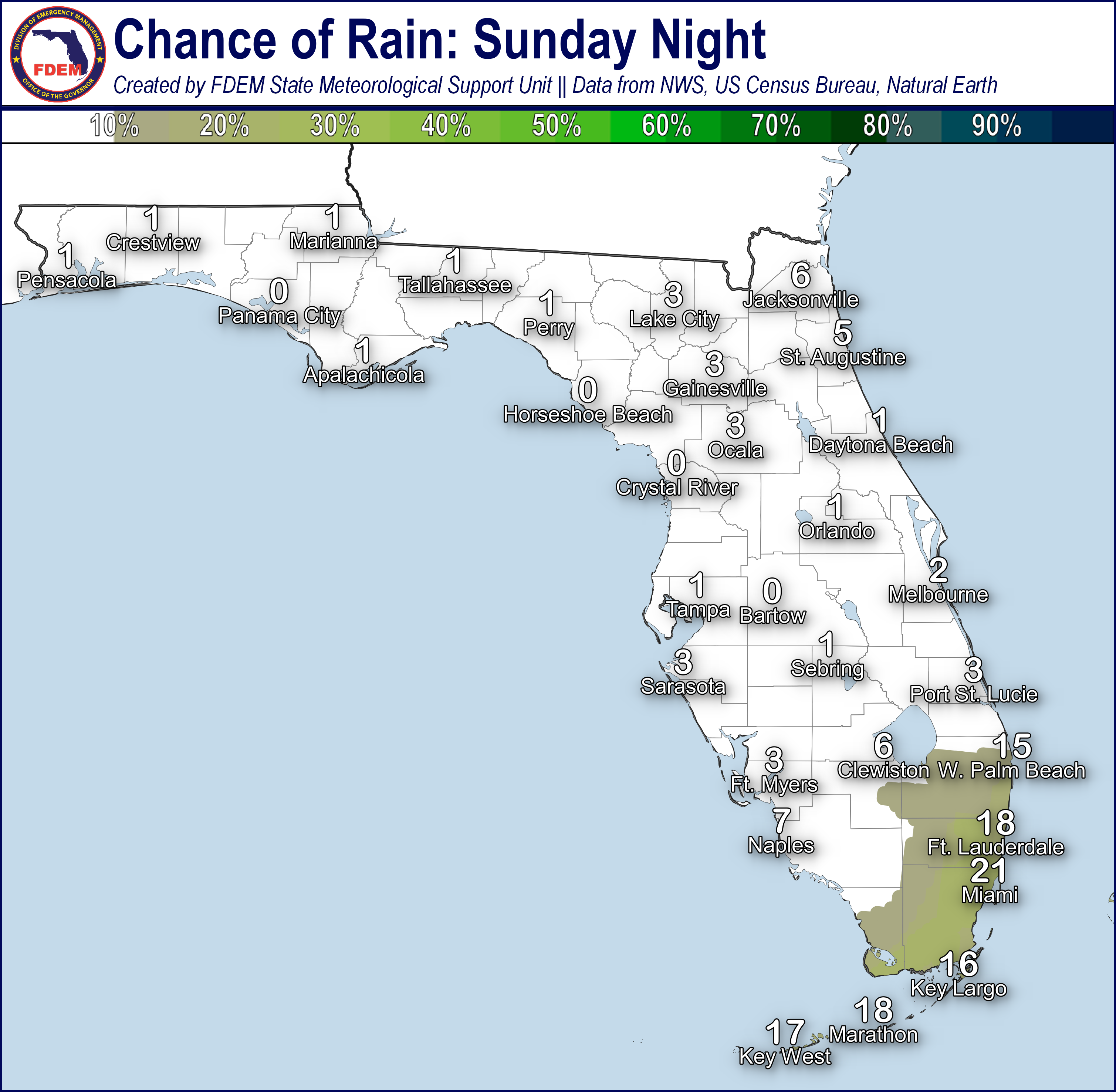
![]()
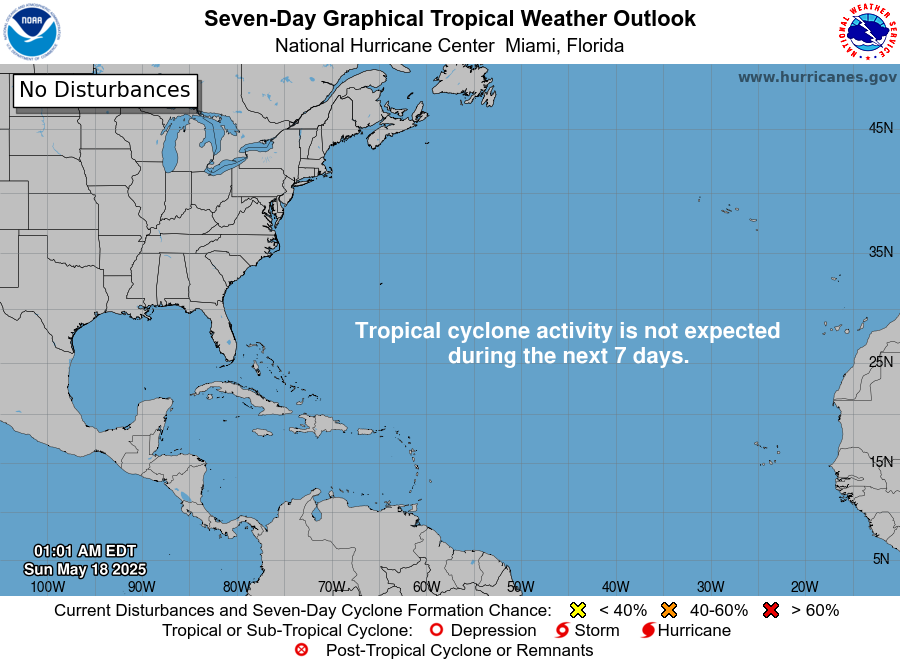
Hurricane season officially runs from June 1 to November 30.
For the latest on the tropics, please visit the National Hurricane Center (NHC) at www.hurricanes.gov.
![]()
Rip Currents: Numerous beaches will see a moderate risk for rip currents, with a high risk along Gulf and Palm Beach counties. For the latest Rip Current Outlook, visit www.weather.gov/beach.
Marine Hazards: Ocean swells will decline throughout the state today keeping wave heights near 1-3’ across the state with portions of the Treasure Coast seeing waves upwards of 4’.
Red Tide was observed at background to medium concentrations in Bay County, very low to low concentrations in Gulf County, and background to very low concentrations in Franklin County. Across Southwest Florida, it was also observed at background concentrations offshore Hillsborough County. Red Tide was not observed along the Florida East Coast (valid 12/23).
Coastal Flooding: There is no risk for coastal flooding across Florida.
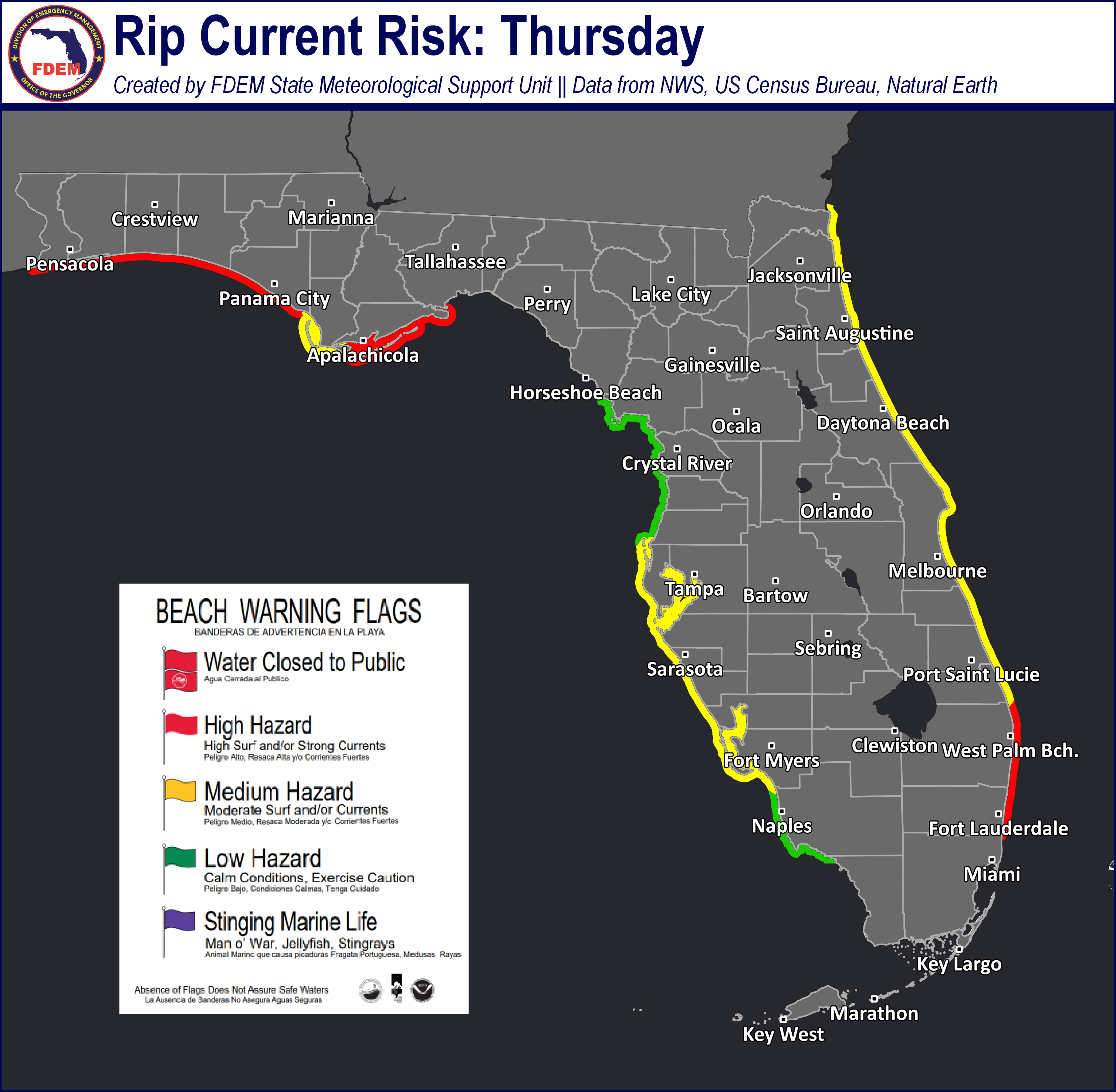
![]()
Fire Weather: Elevated wildfire conditions will persist throughout the state today as very dry air has settled into the state creating critically low relative humidity values. Elevated wind gusts upwards of 15 mph will remain possible from the Suwannee Valley and throughout the Peninsula, contributing to the Elevated Wildfire Outlook (level 1 of 3) from the Storm Prediction Center (SPC). Critically low relative humidity values and elevated winds on top of the ongoing drought conditions will lead to the enhanced wildfire conditions. Outdoor burning is not recommended, especially with active burn bans in place. With the worsening drought, localized dangerous wildfire conditions cannot be ruled out. According to the Florida Forest Service, there are 38 active wildfires across the state burning approximately 628 acres.
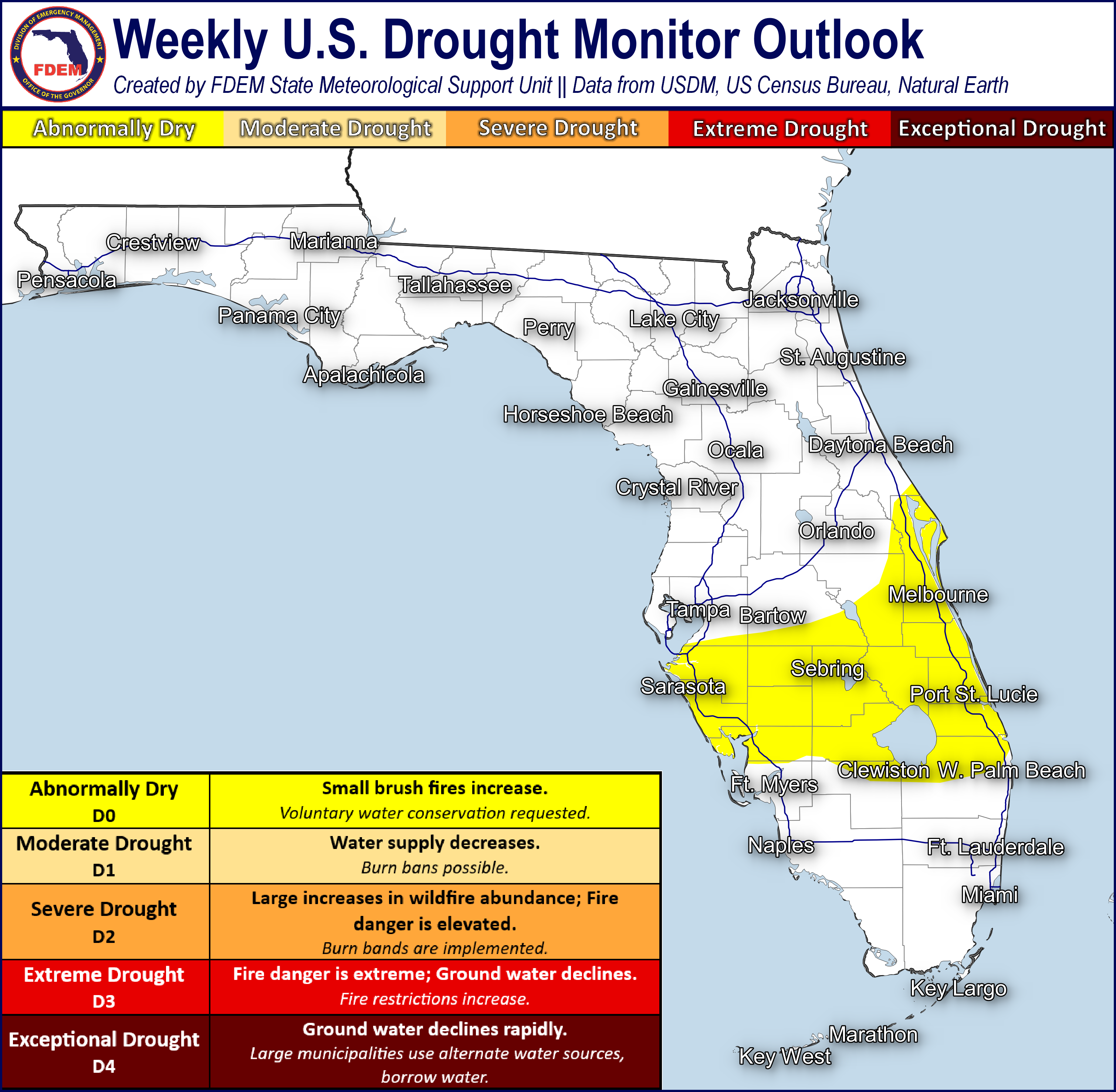
Drought (12/24): Over the past two weeks, much of the Florida Peninsula has seen little in the way of rainfall outside of immediate coastal Southeast Florida where rainfall totals have only added up to 1-2”. As such, drought has expanded for parts of South and Central Florida on this weeks latest Drought Monitor outlook. A Moderate Drought (level 1 of 4) has been expanded north of Lake Okeechobee to include all of Highlands, Okeechobee, and interior Martin and St. Lucie counties. Over the last two weeks, these areas have seen nearly zero rainfall which has been exacerbated by warmer than normal temperatures for this time of year. A similar story is ongoing along coastal West-Central Florida where the Severe Drought (level 2 of 4) has also been expanded to include all interior Hardee and DeSoto counties, as well as southwest Polk county. The long-term (60 to 90 day) drought in these areas continues to worsen, with many areas between 6-8” below normal rainfall over the past two to three months. The Nature Coast has also seen a lack of rainfall in the long-term, with coastal Levy, Citrus, Hernando and Pasco counties under a Severe Drought (level 2 of 4) with rainfall departures around 3-4” below normal over the past 2 months. Moderate Drought (level 1 of 4) has also been expanded away from the coast to include the interior counties of Sumter, Marion, and Putnam in Northeast Florida where similar rainfall departures over the past 2-3 months are found. Abnormally dry (emerging drought) has been introduced too all East-Central Florida, bringing 99% of the entire state of Florida under at least some classification of drought. Across North Florida and the Panhandle, very little changes were made to this week’s outlook. An Extreme Drought (level 3 of 4) remains in place over Liberty, Gadsden, Leon, Wakulla, and Jefferson counties with a Severe Drought (level 2 of 4) surrounding that. A Moderate Drought (level 1 of 4) occupies the rest of the I-10 corridor across the Panhandle and Northeast Florida. Very little meaningful rainfall is expected over the next week which will likely bring persistence, or worsening, drought levels on next weeks outlook. Although some water levels improved from recent rainfall over North Florida, dry conditions will begin to bring those back down slowly below normal levels.
The Keetch-Byram Drought Index average for Florida is 468 (+3) on a scale from 0 (very wet) to 800 (very dry). There are 28 Florida counties that have an average KBDI above 500 (drought/increased fire danger).
![]()
Flash Flooding: There is no organized risk for flash flooding today.
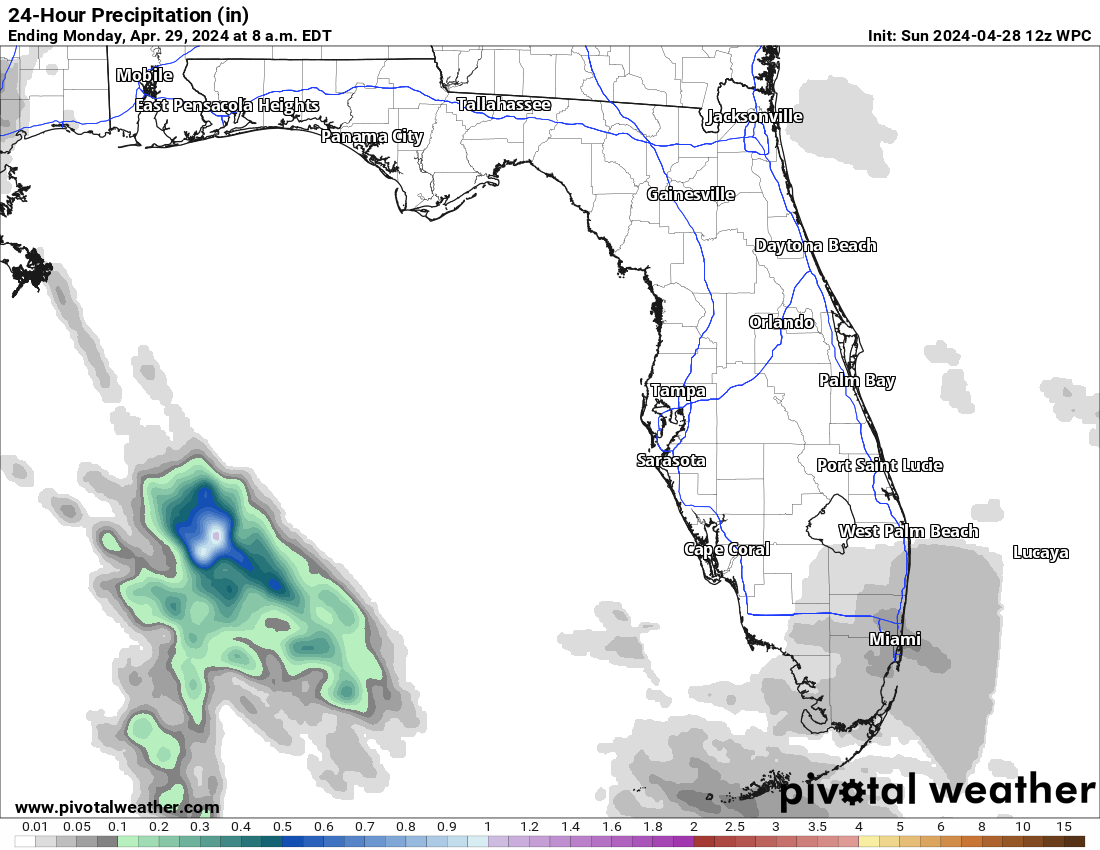
Riverine Flooding: There are no riverine concerns across Florida. For more information, visit the River Forecast Center.
Lake Okeechobee’s average elevation is 13.40 feet, which is within the operational band and is 1.25 feet below normal for this time of year.
